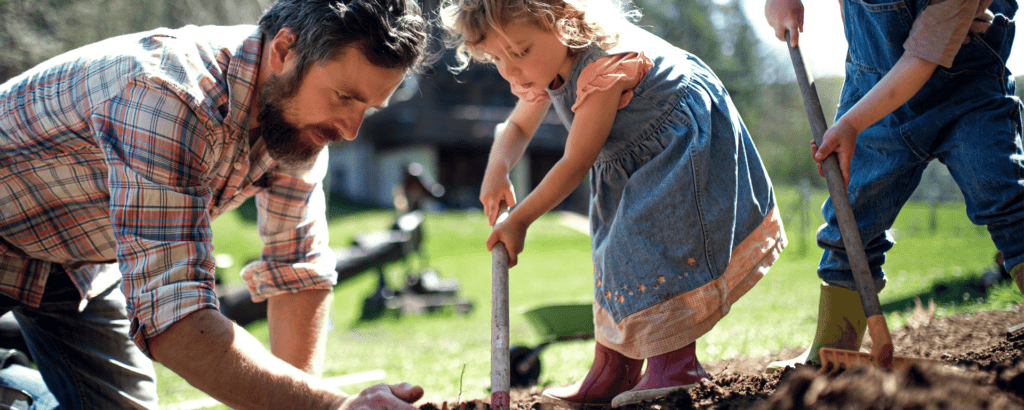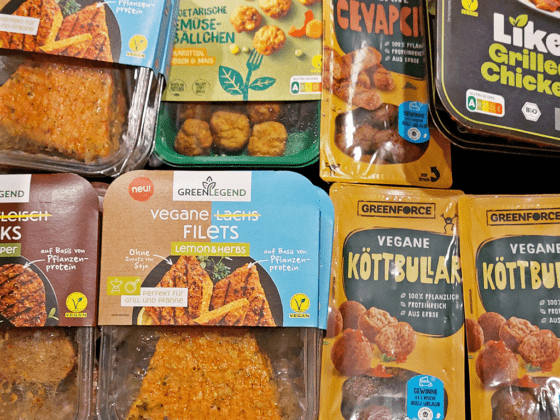Here is how you can protect your garden and balcony from plastic invasion
The summer sun enlivens nature, and gardens get mowed, planted, and sown again. Gardening is the Germans’ second favorite hobby (after shopping). Millions of garden owners dig for relaxation, grow vegetables, or work from home in a green office. But what feels healthy and sustainable unfortunately creates mountains of plastic waste. In the meantime, biologists have also discovered that carrots, lettuce, and the like can virtually “drink” tiny plastic particles.
Reason enough to put your garden or balcony on a plastic diet this summer! Here are seven ideas you can implement to reduce plastic:
1. Flowerpot fasting
Especially in spring and summer, when hobby gardeners buy seedlings at the plant market, millions of plastic pots end up in the trash – because many of these containers can’t even be recycled.
Here’s how to do away with flower pots:
- Buy plants at regional markets or directly at the nursery, or share them with neighbors – wrapped only in paper or packed in pots you bring along. Often there are also offers from hobby growers in classified ad markets
- Avoid short-lived plants and disposable flowers in plastic pots
- Use existing plastic pots several times and grow fruit, vegetables, or herbs from seeds yourself. If you plan and sow in time, you will have individual upcycling gifts for different occasions right away.
- Ask if the nursery accepts used pots back. This is another way they can be used multiple times.
Innovation out of the market: The DIY chain store group toom is currently converting its range to recyclable plant pots, most of which are also made from post-consumer material, i.e. plastic that has already been recycled. According to its own figures, it really pays off: toom alone sells 60 million plant pots a year. Last year, the changeover already enabled 390 tons of plastic to be returned to the recycling loop. From April 2022, toom has also been replacing its disposable pallets for plant transport with 60,000 reusable pallets in 230 stores.
Tip: Recycled culture pots look gray or colorful. Pots from the “Pöppelmann blue” brand are blue. The conventional black planters are dyed with carbon black and cannot be recognized as plastic in the recycling plants.
2. Caress plastic
This “diet strategy” sounds paradoxical at first, but also prevents a lot of waste. Plastic items that have already been made and “live” in the garden should be well cared for so that they last as long as possible. However, please do not wait until the garden chair crumbles or the flower pot falls apart on its own.
Caution: Before plastic becomes brittle and spreads throughout the garden, it is crucial to dispose of it properly.
UV radiation and frost are the biggest enemies of PVC and Co. After a winter outdoors, irrigation equipment, hoses, or cover foils are usually ready to go in the trash can. Next autumn, put away in advance plastic items that are in good condition.
3. Discover alternatives
There are great alternatives for almost all cases of plastic use in the garden. Often, it is original technologies or utensils that our grandparents used before the plastic invasion arrived.
Checklist for plastic replacements:
-
- real meadow instead of artificial turf
- nettle liquid manure instead of fertilizer from plastic bottles
- clay pots, egg cartons, or nursery pots instead of plastic pots
- wooden furniture instead of plastic chairs
- metal watering can instead of a plastic one
- baskets made of natural materials and fruit crates instead of plastic
- jute or hemp strings instead of plastic clips and plastic-coated floral wire
- wooden signs (or bamboo skewers from DIY stores) instead of plastic signs for marking beds
- jute bags, fleeces made of hemp or jute, lawn clippings or shredded material instead of plastic mulch fleece
- cotton gauze instead of plastic as protection against cold and insects
- tools made of wood and metal instead of plastic
- natural rubber hose instead of PVC hose – also prevents plastic particles in the irrigation water
Tip: For various hobby gardening equipment, we even recommend a zero diet – without alternatives. There are many things you simply do not need for successful gardening, even if the colorful brochures and displays suggest otherwise.
4. Buy high-quality plastic
If there is no sensible alternative to plastic, consider high-quality items when making a new purchase. Take your time to research tests and warranty conditions. A solid greenhouse, balcony boxes, or fleeces in gardener quality would definitely cost more than discount goods but would also last longer.
Controversial WPC planks: Many hobby gardeners wonder if they should build a terrace out of wood, plastic, or WPC (wood-polymer-composites). WPC planks contain plastic, of course, but they are still better than those made of tropical woods or pure plastic and are even ecologically equivalent to planks made of native coniferous wood if they last longer. This is how the Fraunhofer Institute for Wood Research and the German Federal Environmental Foundation (DBU) evaluated the various materials. Hobby gardeners are advised to compare different materials and then decide.
5. Save packaging
Flower pots are not the only waste problem for hobby gardeners. Even bark mulch, lawn seeds, and organic fertilizer – almost everything comes in bottles or bags made of plastic.
Some ideas for less packaging waste:
- if possible, buy garden articles in paper bags
- purchase one large package rather than several small ones, for example, for soil. If possible, share it with neighbors
- buy fertilizer not as a ready-made mixture, but as a concentrate – this way one load lasts a long time
- get larger quantities of soil, sand, or bark mulch delivered without packaging from a specialist market
6. Make soil yourself
Did you know that ordinary plant soil from the hardware store contains plastic waste? The reason behind it is that it is made from green waste from parks, gardens, and cemeteries and organic waste from private households. Contained garbage cannot be sorted out completely in the composting plants. The NDR consumer magazine “markt” tested eight types of compost in a laboratory – including organic items. The result: tiny plastic particles were found in all samples, most of them in the soil from the Hagebaumarkt (2.74 grams per 40 liters) and in that from Dehner (2.11 grams), the fewest in the organic compost from toom (0.63 grams) and in a raised bed soil from Bauhaus (0.60 grams).
The only alternative is to make your own compost, preferably in a wooden or metal container. If you have enough space, you should definitely give a try to this home recycling system. Plant remnants decompose and can so be reintroduced into the cycle as fertilizer later on. Compost soil attracts worms and insects, improves soil structure, and saves water. This does not only save fertilizer, but also transport and organic waste recycling. Perfect!
Tip: If you want to invest less time and effort, you can first try “compost light” and simply place chopped plant residues as mulch on the beds or under trees and shrubs. This also provides nutrients and soil protection.
7. Chase plastic
Hobby gardeners should make sure that absolutely no plastic parts end up in the environment. After all, any part that ends up in the soil or water cannot be “retrieved” from there – and in the worst-case scenario, it even ends up in our food. Plastic waste may be getting smaller due to environmental impacts but it does not disappear.
That’s why we now have a huge but invisible problem. Scientists found that in Germany, only about a quarter of the plastic that ends up in nature is macroplastic. 74% of plastic waste is therefore microplastic particles measuring less than 5 millimeters or even tinier – nanoplastic particles.
Tip: Regularly collect old bags, plant signs, or flower pots in your garden and throw them in the household or yellow trash can.
 English
English Deutsch
Deutsch




